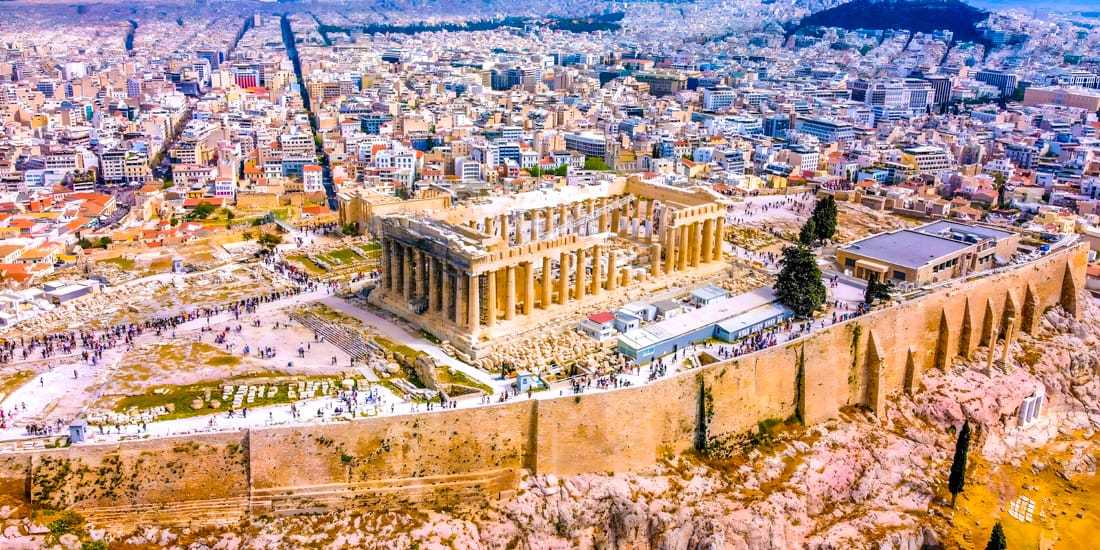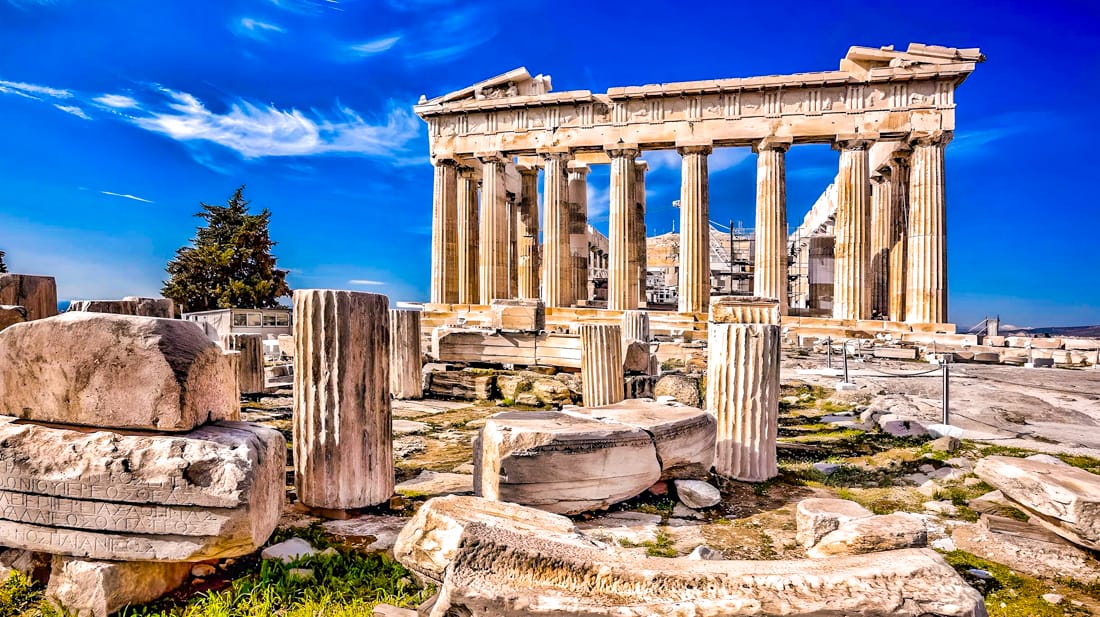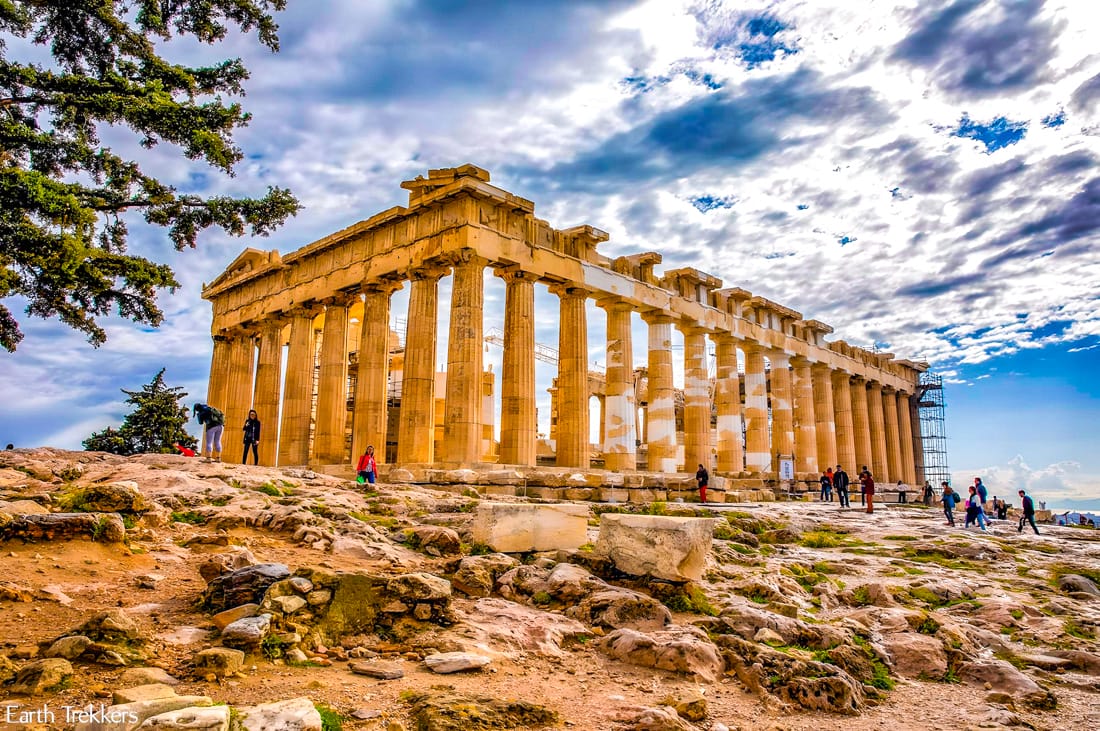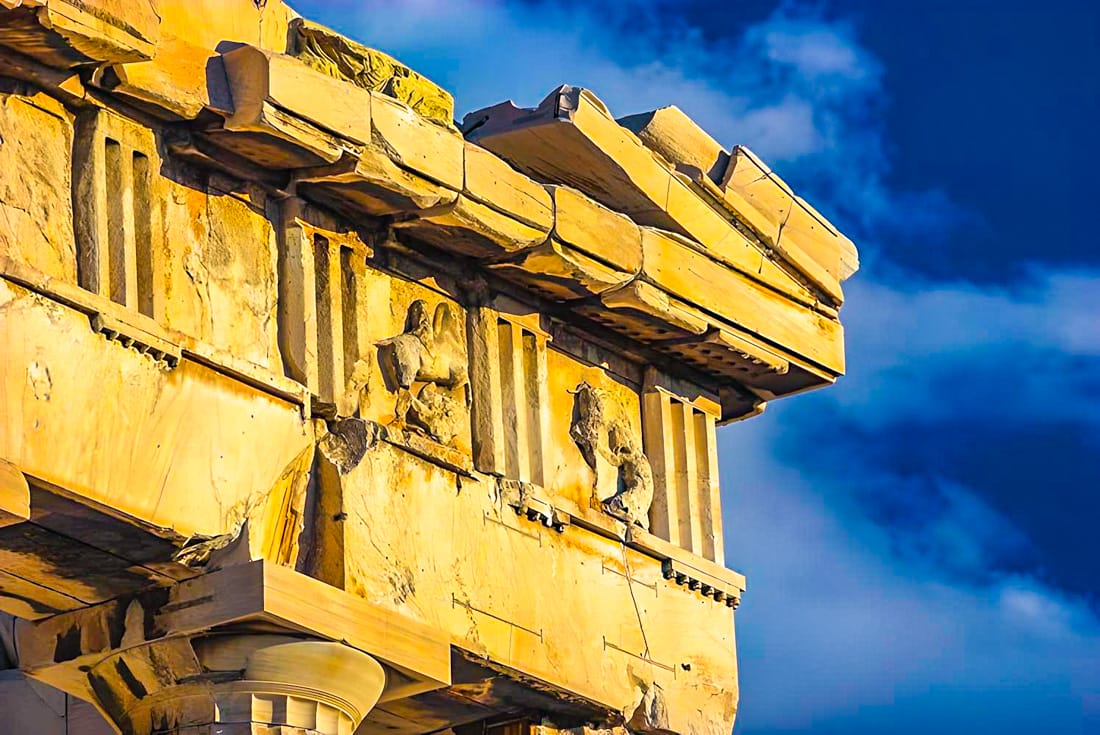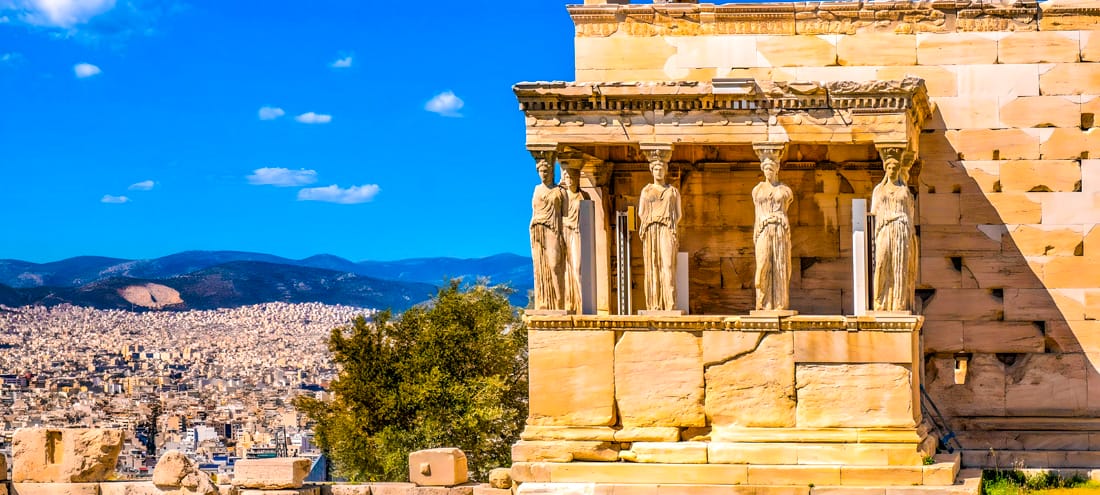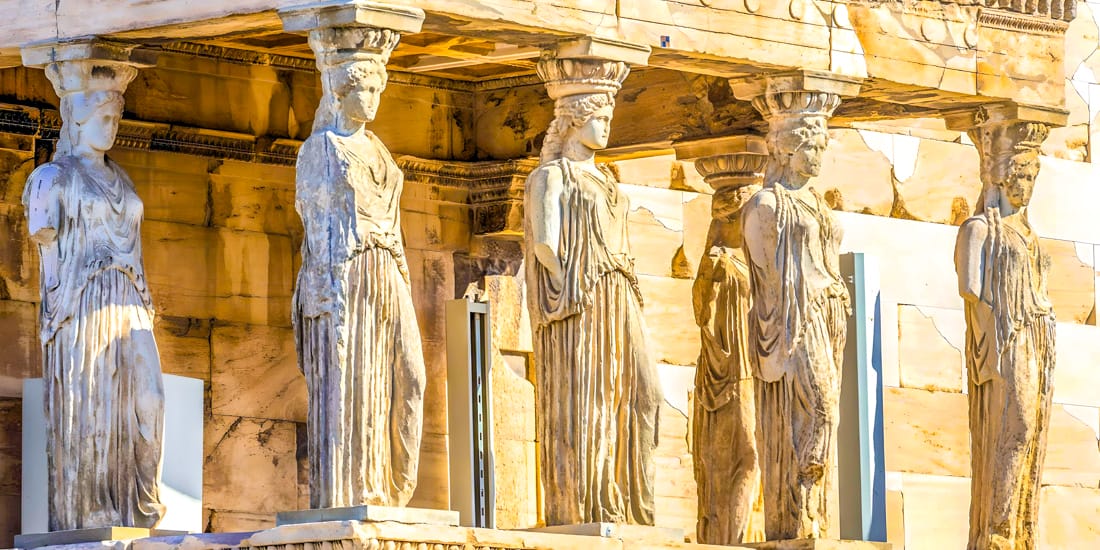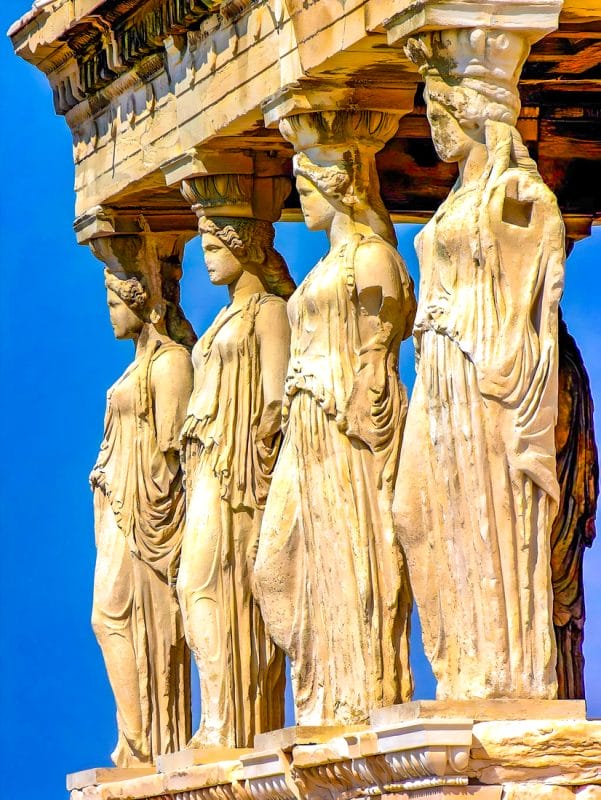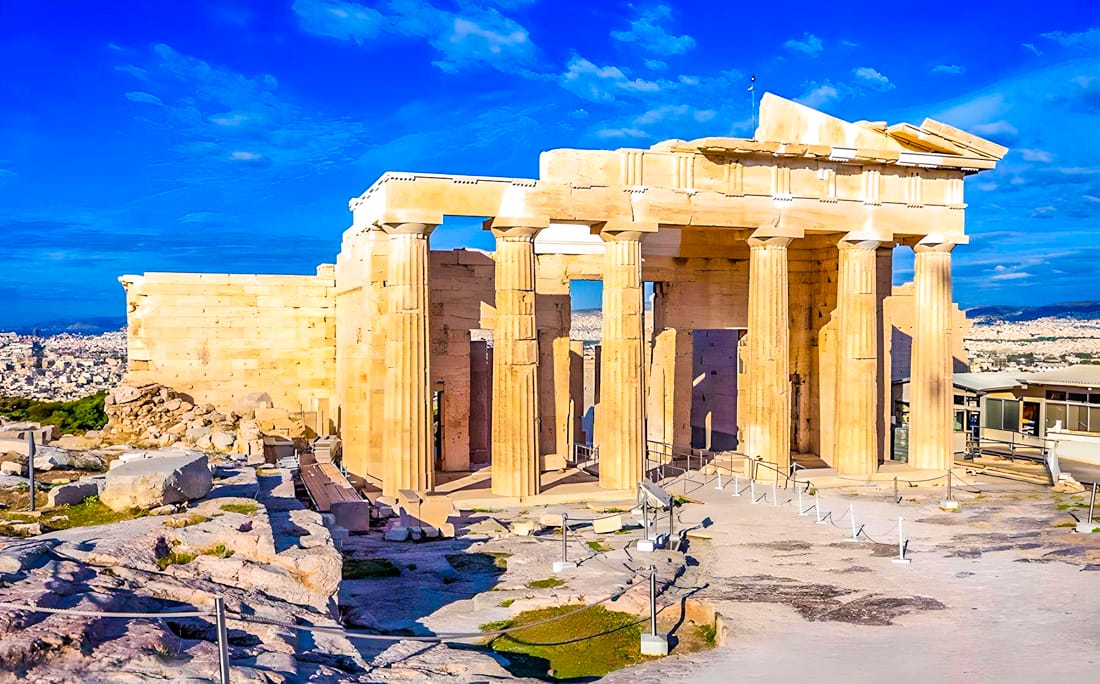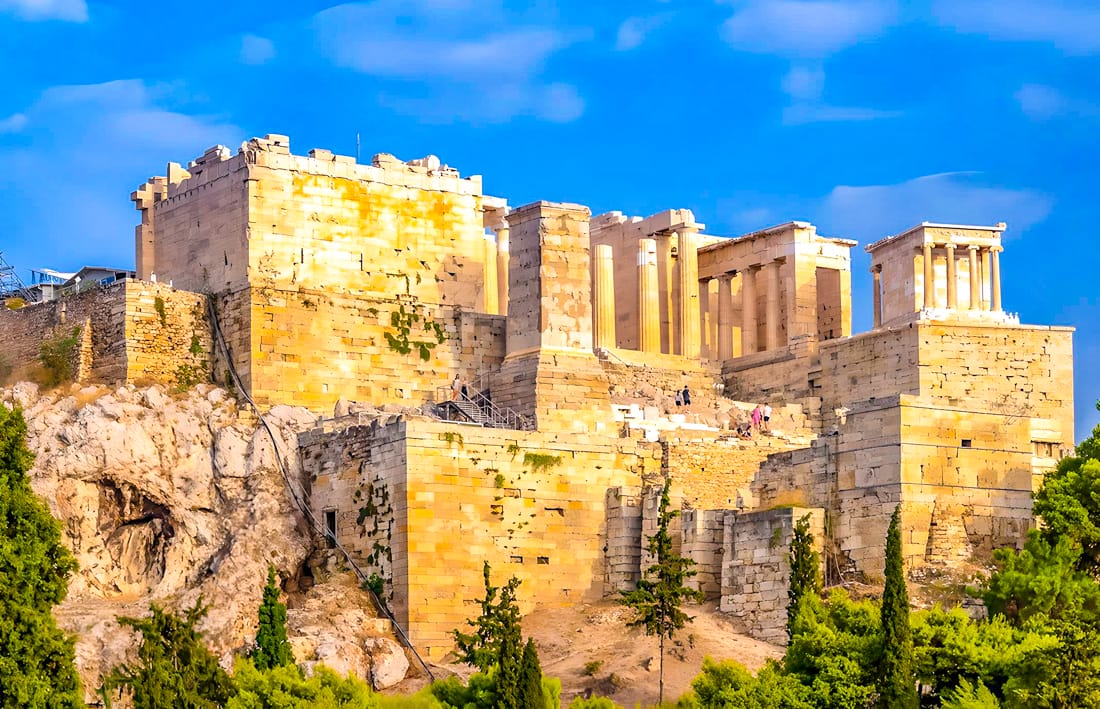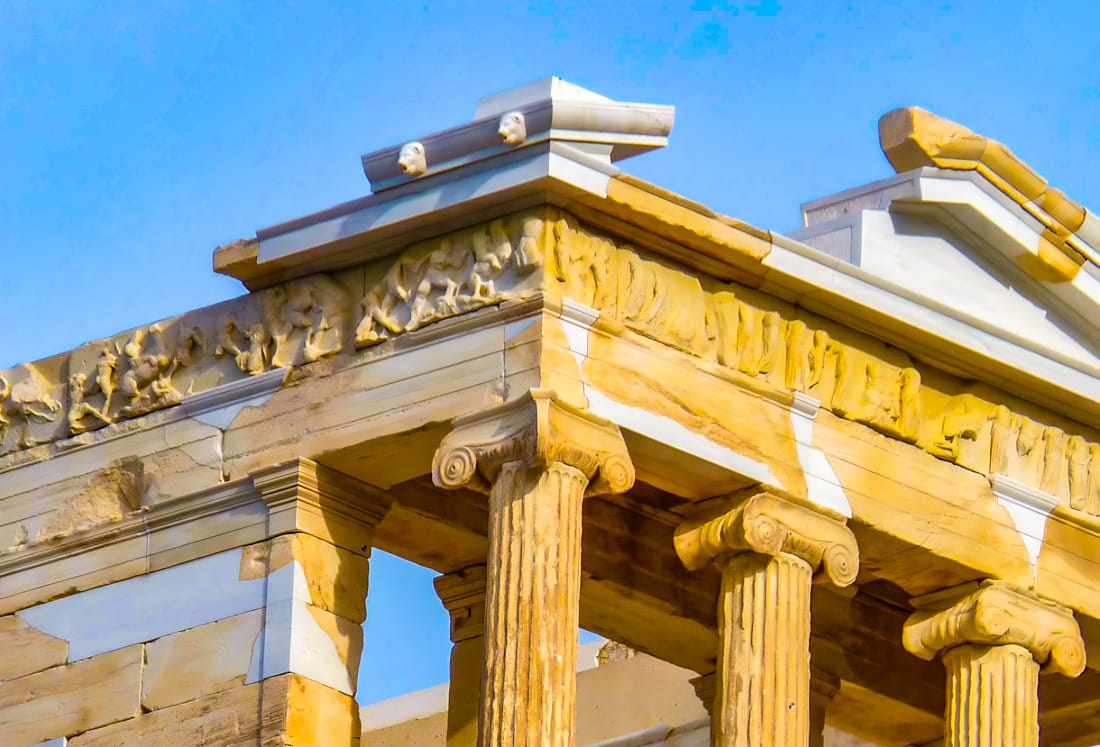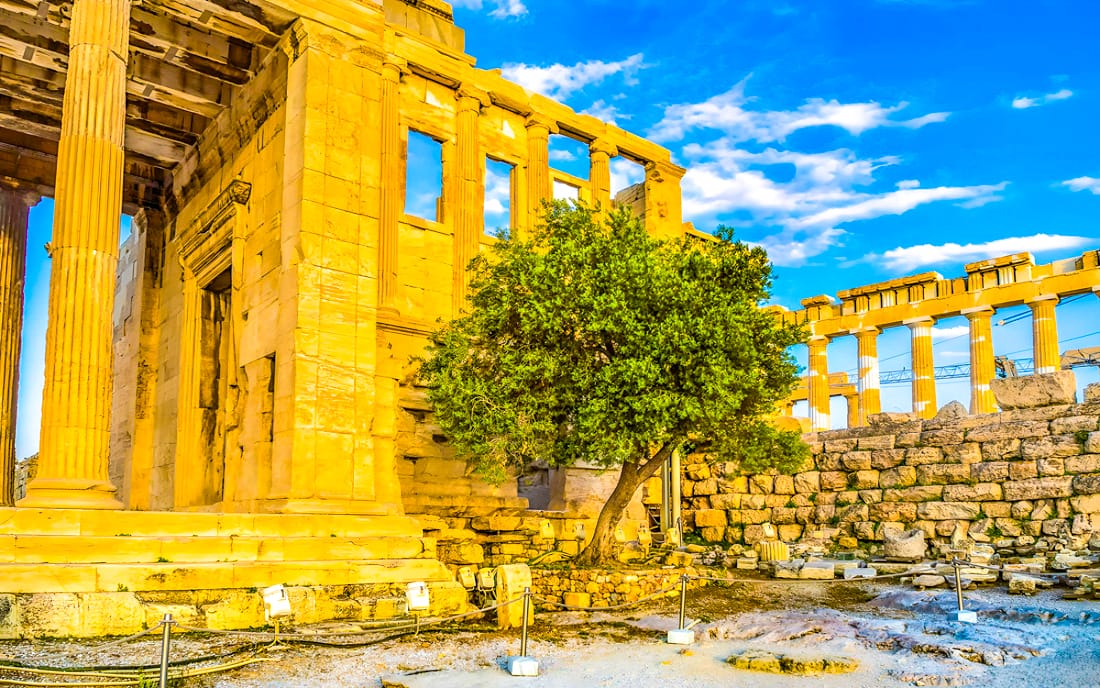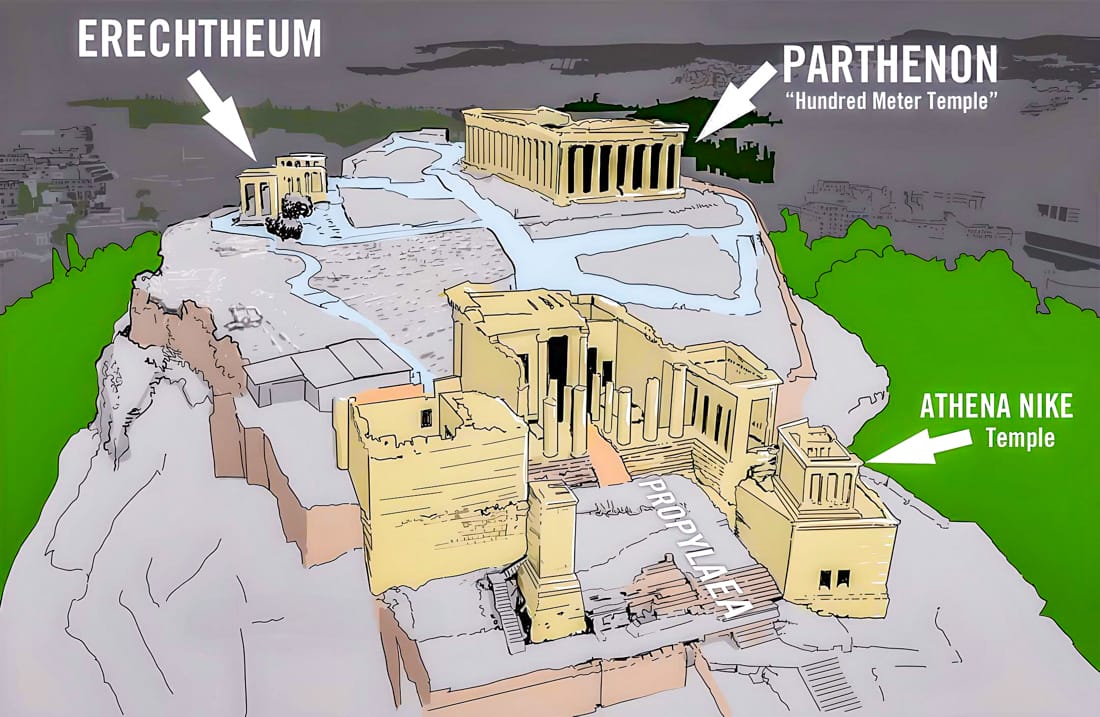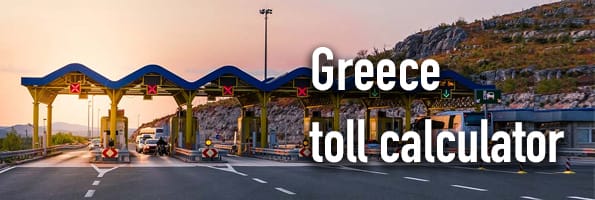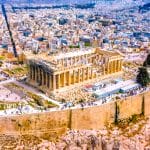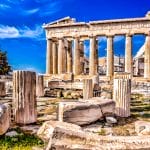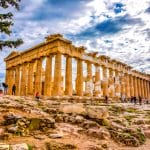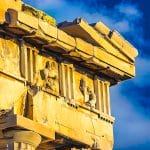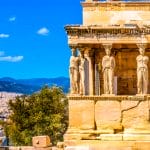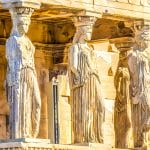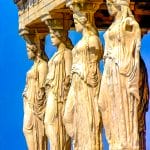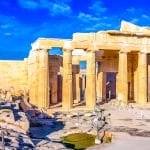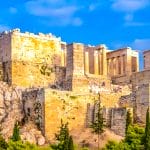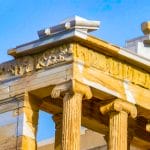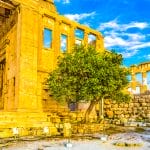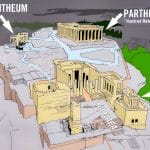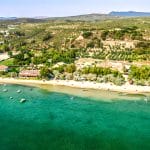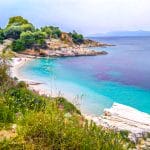Acropolis
Standing tall above the bustling city of Athens, this UNESCO World Heritage Site is home to some of the most awe-inspiring ancient structures in the world, including the Parthenon, the Erechtheion and the Temple of Athena Nike. A guided tour of the Acropolis is a must-do for any traveler to Athens, as it provides a wealth of knowledge and context to the citadel’s history and significance. Don’t miss the opportunity to explore this ancient wonder and be transported back in time!
Parthenon
The Parthenon, located on the Acropolis in Athens, Greece, is a temple dedicated to the goddess Athena, the patron of the city. It was designed by the architects Iktinos and Callicrates, with sculptures by the famous Phidias. According to ancient historians, inside the temple there once was a beautiful golden and ivory sculpture of the goddess, known as the Parthenos Athena (or the Virgin Athena). Although the fate of the original statue has been lost in the mists of time, several copies have been made.
The Parthenon, a UNESCO World Heritage Site, is considered one of the greatest examples of ancient Greek architecture and one of the country’s most popular tourist destinations. If you want to learn more about the Parthenon and the Acropolis, be sure to check out our blog post which provides in-depth information and interesting facts about these ancient treasures.
Erechtheion
Nestled atop the ancient Acropolis of Athens, the Erechtheion temple stands as an eternal testament to the unparalleled artistry and architectural prowess of classical Greece. Constructed in the latter half of the 5th century BCE during the Golden Age of Athens, the iconic temple is enshrouded in myth, history and legend.
Deviating from the traditional, symmetrical layout of temples, the Erechtheion is dedicated to multiple deities, reflecting the diverse and complex religious beliefs of ancient Greece. Among the sacred sites within the temple is the shrine of Athena Polias, the divine protector of Athens, as well as the mythical tomb of Erechtheus, the city’s legendary founder. Read more about the architecture and history of the Erechtheion.
Perhaps the most striking feature of the Erechtheion is its enigmatic Caryatids – six graceful, larger-than-life female statues that effortlessly bear the weight of the temple’s southern porch. The delicate interplay of light and shadow breathes life into these figures, as they eternally stand guard over the temple’s hallowed grounds.
Temple of Athena Nike & Propylaea
The Propylaea is the first thing you’ll see on entering the Acropolis. It was built as the primary gateway into the sanctuary dedicated to Athena, the Propylaea predominantly features six, towering marble and limestone columns.
The Temple of Athena Nike, located right next to the Propylaea, is a classic site of worship built between 426-421 BC in honor of Athena, the protector of the city. The temple, known for its architectural beauty and historical significance, offers visitors a glimpse into the religious practices of ancient Greece.
How many entrances does the Acropolis of Athens have?
The Acropolis of Athens has two entrances: the main entrance located at the western end, and the side entrance, also known as the Dionysus Theater entrance, located on the southeastern corner of the site.
You must be logged in to submit a review.
REVIEWS
Excellent view of the city. Our taxi driver dropped us at the bottom of a steepish incline and we walked up the cobbled stones to the entrance. We already had our online tickets handy. On busy days this is essential to avoid queues. Book on the official website. The toilet stop is to the right of the entrance but there were other portaloos on the left before we reached that point. The portaloos didn’t have a queue so think most people miss them. The other toilets have big queues, drains smell, take your own paper to use and remember to put in the bin do not flush paper, its a greek thing. We went before peak season but there were still a number of tour guides with their groups clogging up the last incline to the entrance barriers. We spotted they were stationary and went round them so we could enter immediately. These same tours kept getting in our way all the way round. We found it much better to see the Acropolis, all the buildings and the sights ourselves and try to give the big tours a wide berth. This way we could get decent photos as well. There are a couple of discreet signs saying to be careful as its slippery. I managed to stay upright but noticed a younger woman slip and almost fall completely. I would not recommend going on a wet day as the marble would be extrememly slippery then, or wear really good walking boots for traction. Dry days be really vigilant and constantly watch where you are walking. I turned to reply to my husband at one point and fell awkwardly into a marble pothole. Luckily was a small sprain and didn’t cause injury to my previously ruptured and healed achilles. Amazing view of the city from the top all the way round. I believe there is a lift to one side so if you have disabled visitors check this out before you go. Take your time to focus your cameras, there is an amzing shot through one gateway towards an area of the city. Stunning. Was very hot when we went even though not peak season so remember your hat and sunscreen and cover up if you burn easily like me.
Upon arrival in Athens, we bought a ticket for 30 euros per person that allowed us to visit 7 sights, including the Parthenon. For this, a day and time slot had to be selected in advance. The other sights could then continue 5 days of free visits. Although other reviews say that the time slot does not matter for the visit to the Parthenon and the slopes, our tickets were checked at the gates upon arrival and we had to wait another 10 minutes before we were allowed through the gates. It was then 15 minutes before our allowed time. At least 30 people were also waiting with us with the same time slot. So coming earlier was pointless. Come later and you were no longer allowed. Although the climb seems impressive when you stand at the foot of the mountain, it is certainly not too bad. Once at the top you forget the entire climb, because the view is magnificent. The Parthenon itself (although surrounded by a crane or scaffolding here and there) is also definitely worth seeing. A tip is to wear good shoes, not necessarily because the climb is difficult, but because so many people walk over the stones, they have become very slippery in some places, both when climbing and descending. When you reach the top it is an experience you will never forget and we are all very happy that we dared to do it.

